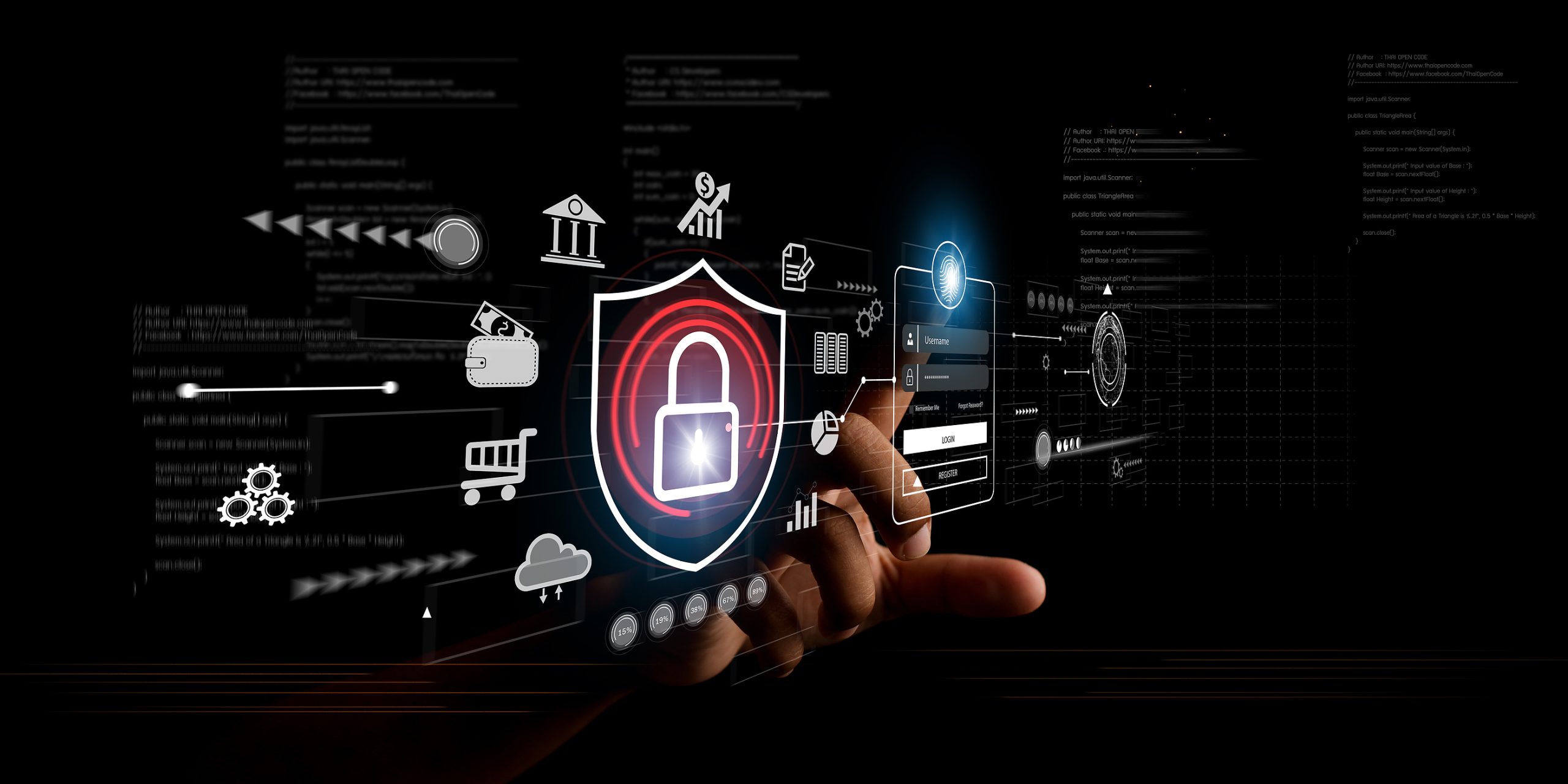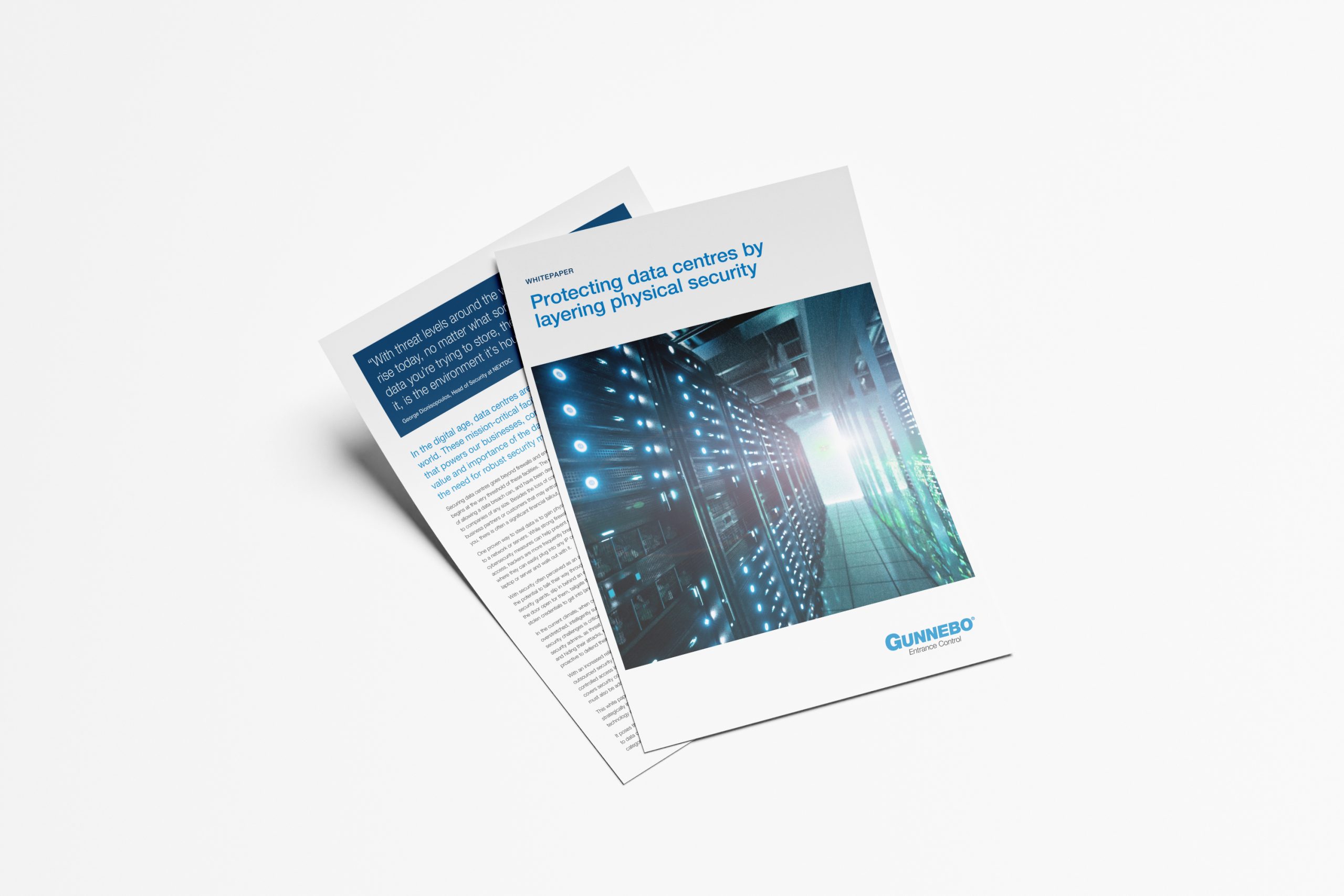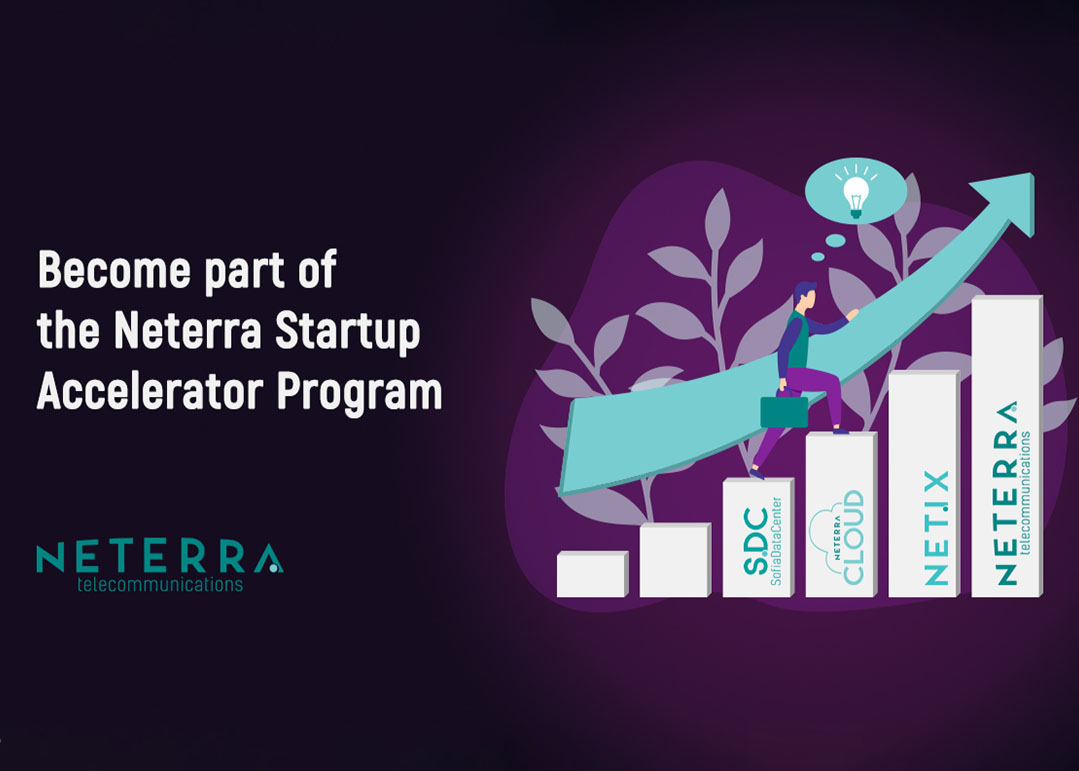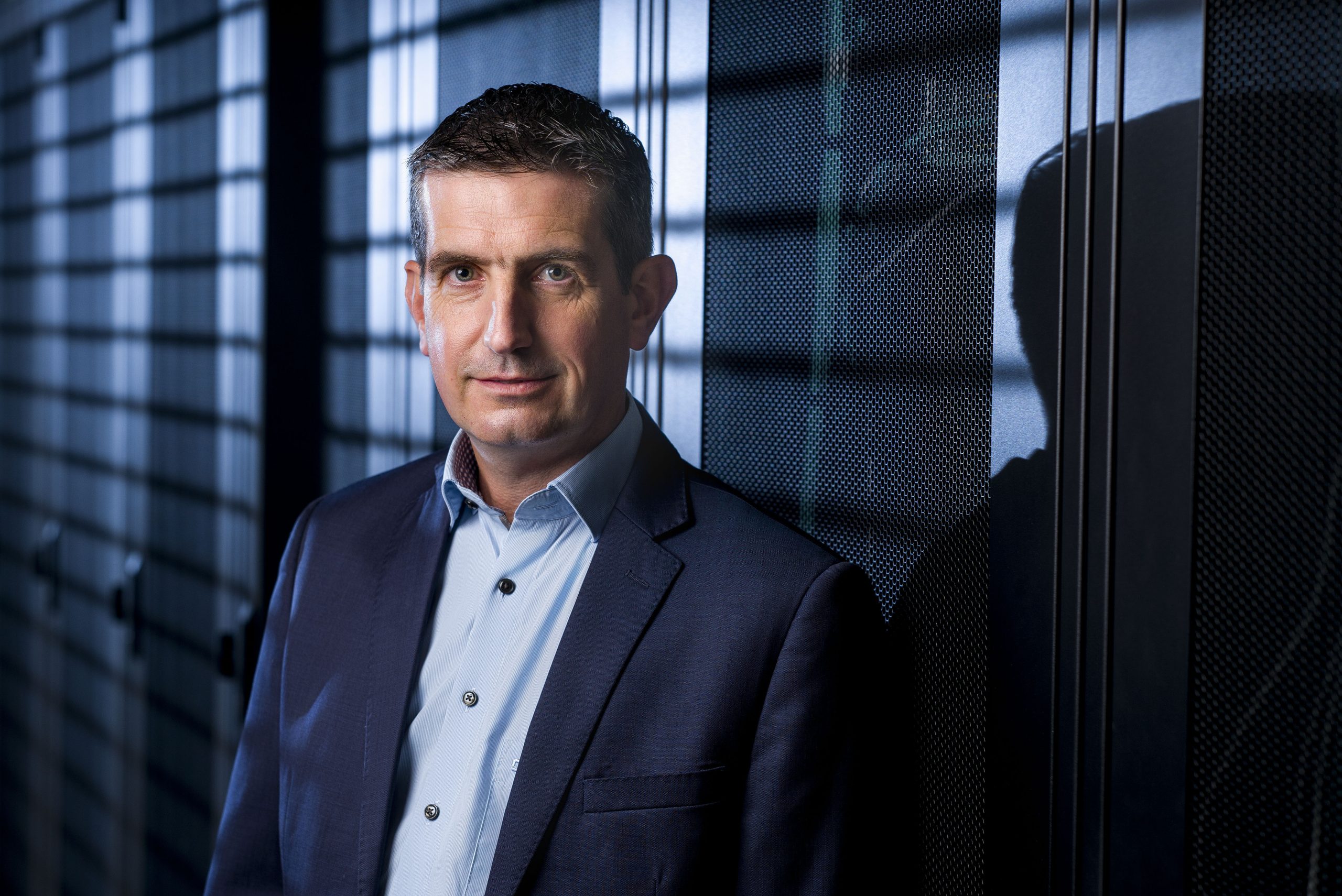Data Centre Security: Protecting Infrastructure from Physical and Cyber Threats
Cyber Security Insights for Resilient Digital Defence
Data Centre Security: Protecting Infrastructure from Physical and Cyber Threats
News
Logpoint and SecurValue to secure organisations in Southern Europe
Logpoint has announced a partnership with SecurValue, providing cyber security services to help customers detect and respond to cyber threats. Armed with its SIEM+SOAR solution, SecurValue can offer robust threat detection and response, real-time data analysis, early detection of data breaches, and easy implementation of compliance requirements.
“We’re happy to partner with SecurValue to help organisations strengthen security posture and cyber resilience. They share our vision for conducting long-term business in Southern Europe,” says Christian Pijoulat, Regional Director SEMEA at Logpoint. “SecurValue has a tailored approach to their customers, based on skilled cyber security professionals and trusted technologies, and we’re proud that Logpoint’s solution is now a part of that.”
The Southern European market is preparing for the local implementations of the Network Information Security (NIS)2 directive from the European Union to increase cyber resilience across the EU. The directive will expand the existing regulations within data and cyber security, introducing stricter requirements for a broad range of sectors. Non-compliance and failure to report incidents will result in significant fines and sanctions.
“We’re excited to add Logpoint to our portfolio to offer our customers improved security capabilities, streamlined operations, and enhanced compliance adherence,” says Fabio Cagna Vallino, Cyber Security BU Director at SecurValue. “CEOs across the region are becoming aware that cyber threats are a top concern and that investments in cyber security are essential to minimise cyber risk. Especially small and medium-sized organisations are struggling with the lack of cyber security professionals trained to handle threats effectively, which leaves them at a major risk of exposure.”
SecurValue will offer the Logpoint SIEM+SOAR solution, which analyses security incidents and automates the investigation of threats, improving cyber intelligence, reducing cyber security risk, and accelerating threat detection, investigation, and response. SecurVlaue will also use Logpoint Director, a platform that helps MSSPs and MDRs update, manage, and monitor large and multi-tenant deployments.
Isha Jain - 23 January 2024
Cyber Security Insights for Resilient Digital Defence
Data
Data Centres
Aspire expands its footprint with the acquisition of Cloud Cover IT
Aspire Technology Solutions, a cyber security and modern workplace managed service provider, has announced the acquisition of Cloud Cover IT, a managed service provider based in Glasgow.
This is an important strategic acquisition for Aspire, aligning with its vision for expansion into new UK regions and expanding its portfolio of cutting-edge technology solutions.
As part of this investment, Cloud Cover IT will become a part of the Aspire group, and its software development and business applications division will be rebranded as 'Flyte.' The company will be well-positioned to make ongoing investments, better serving its growing customer base by extending its business applications offerings.
Cloud Cover IT has been delivering IT support and digital transformation solutions for over 11 years. It prides itself on providing excellent service to its customers. As part of the Aspire group, it has access to the full range of Aspire products, solutions and expertise, offering greater benefits to its customers.
Chris Fraser, CEO and Founder of Aspire says, “Our acquisition of Cloud Cover IT marks a new and exciting chapter for both companies. This move will strengthen our presence in Scotland, positioning us in a thriving market. The Cloud Cover team will become an integral part of the Aspire group, and together, we believe we can grow significantly in this key strategic market. I'm excited to see the opportunities accelerate as we offer customers, present and future, the innovative solutions that they need in a changing world. Exciting times lie ahead.”
Lance Gauld, Founder and MD at Cloud Cover IT, comments on the synergy between the two companies, “Multiple factors drew us to Aspire; they are an outstanding company. The alignment between our organisations and how we complement each other is evident. We share similar values in our approach towards our people, customers, and objectives. This partnership is not merely a merger with a large IT company; it is a collaboration with a leading UK technology provider that understands us. As part of the Aspire group, we can grow our footprint further and broaden our offerings with access to more expertise, resources and an extensive portfolio of solutions to help our customers drive their businesses forward.”
With a 17-year legacy in the technology sector, Aspire has experienced significant growth, serving over 1,700 customers and nurturing a dedicated team of around 250 experts. It has a notable footprint across the UK, including offices in Gateshead, London, Leeds and Teesside. Aspire has earned a reputation for delivering leading solutions across cyber security, cloud, managed services, connectivity and unified communications.
Jessica Pereira - 4 January 2024
Data Centre Security: Protecting Infrastructure from Physical and Cyber Threats
News
Navigating the promise and pitfalls of cyber security automation
By Leon Ward, Vice President of Product Management, ThreatQuotient
New 2023 State of Cybersecurity Automation research reveals that while adoption is rising, lingering hurdles undermine its effectiveness.
Cyber security automation has steadily gained traction as organisations seek to improve efficiency, address talent gaps, and keep up with escalating threats. However, the latest research shows that while more businesses are utilising automation, they continue to grapple with obstacles that prevent them from fully capitalising on its benefits.
In the recent study surveying over 700 cyber security professionals, ThreatQuotient uncovered several persistent pain points in implementing automation. The research found that a lack of trust in automated outcomes, insufficient expertise among users, and poor communication between teams have hampered automation success. As a result, organisations are struggling to build confidence in automation and maximise its effectiveness.
Lack of trust undermines confidence in automation
The research revealed ubiquitous struggles with implementing cyber security automation, with 100% of respondents reporting problems. The top issues undermining confidence in outcomes were lack of trust (31%), slow user adoption (30%), and bad decisions (29%).
However, when we drill down, CISOs differ from other leaders regarding specific challenges. 40% cite 'bad decisions' as a top concern, versus 29% overall. With ultimate cyber risk accountability, CISOs feel the impact of poor automation outcomes.
Automated actions like incorrectly blocking legitimate email/domains appear suspicious but negatively impact business. These errors erode user trust that automation improves security and organisations become hesitant to rely on it.
For example, an automated system may erroneously block access to a legitimate business domain that some vendors use for email communication. Employees suddenly find themselves unable to communicate with key partners, and business operations grind to a halt. This not only negatively impacts revenue but destroys end user trust in the value and accuracy of automated security systems. Organisations then become extremely hesitant to rely on automation out of fear of these business-disrupting outcomes.
Without confidence in reliable automated outcomes, businesses will not entrust critical security processes to them. This 31% reporting lack of trust is a major obstacle preventing full realisation of automation benefits. Overcoming this requires solutions that provide transparency into automated decisions.
Skill shortages compound adoption difficulties
Insufficient expertise among security team members makes implementing automation effectively challenging. Limited skills lead to misconfigurations, integration issues, and other problems. These glitches reinforce the 31% lack of trust in outcomes. When automation fails unpredictably due to suboptimal implementation, organisations cannot reap its advantages.
With the cyber security skills gap still growing, and 25% of CISOs reporting the skills shortage as their biggest challenge, businesses often lack personnel to adeptly deploy and manage automation tools. Additionally, 23% of respondents sought training availability when selecting solutions, key for adoption success, and it is clear that skills development should be a key area of focus for organisations to capitalise on automation potential.
CISOs point to organisational issues exacerbating challenges, and 25% cited high team turnover as their number one concern, disrupting expertise continuity and skills to smoothly implement automation.
Achieving lasting buy-in requires clear communication
The research revealed disconnects between roles on automation perspectives, where 42% of CISOs cited efficiency as the top driver to adopt automation, while for SOC leads and MSSPs, regulatory compliance was prime.
These mixed viewpoints signify a lack of alignment on automation goals and direction. CISOs must bridge gaps through improved communication of automation plans and benefits. Setting clear objectives, educating all team members, and demonstrating tangible gains are critical for lasting buy-in.
When one specialised team implements automation in a vacuum, broader adoption lags. But inclusive messaging of how automation helps every role work smarter fosters shared buy-in.
Continuous engagement with stakeholders is also vital. Leaders must showcase automation enhancing efficiency, compliance, productivity, or other goals important to each executive.
With disjointed perspectives on its value and role, automation struggles for foothold. Consistent, compelling communication of advantages enables robust, organisation-wide backing of initiatives.
Smarter tools and processes are key to overcoming obstacles
The 2023 research makes clear that implementing cyber security automation still faces hurdles, with 100% of respondents reporting issues. However, smarter tools and workflows can help organisations overcome these challenges to realise automation's potential.
One key need is for automation tools that provide transparency and guardrails, fostering user trust. Intuitive interfaces also enable easier adoption by users at all skill levels, mitigating the skills shortage cited by 23% as a top challenge.
Standardising processes around automation provides consistency needed to maximise benefits. Workflows like automated triage avoid the ad hoc approaches causing fragmented gains.
Integrations between tools create seamless data flows and unified workflows rather than disjointed toolsets. Report says 24% want integration with multiple data sources when selecting automation solutions.
Implementing automation without addressing trust, usability, training, integration, and standardised processes invites disappointment. The research makes clear these smarter tools and workflows offer a path to overcoming obstacles and automation success.
Automation challenges can be overcome
This exploration of the current cyber security automation landscape reveals persistent challenges that hamper organisations from realising its full advantages. Core problem areas include deficient trust in outcomes, skill shortages among staff, and internal disconnects about automation's role and value.
By taking concerted action to increase confidence via transparency, boost team expertise through training, and align understanding of automation's benefits via consistent leadership messaging, CISOs can overcome these hurdles.
With thoughtful adoption strategies, secure design principles, and inclusive change management, organisations can tap into automation's immense power to enhance security in the face of growing threats. Through a combination of smarter tools, educated users, and clear communication, cyber security teams can achieve new heights of efficiency and effectiveness through automation.
However, achieving automation's full potential is not a one-and-done effort. It requires an ongoing commitment to iteration and optimisation as technologies, threats, and business needs evolve. Regular evaluation of processes and tuning of systems helps sustain peak performance over time.
Leaders must also continually assess the human side of the equation. Check-ins with staff at all levels provide valuable insights to shape training programmes, change management tactics, and internal messaging in a way that maintains strong buy-in across the organisation. With personnel empowered and aligned around shared automation goals, organisations can nimbly adapt their approaches to maximise value.
Isha Jain - 21 November 2023
Cyber Security Insights for Resilient Digital Defence
Data Centre Security: Protecting Infrastructure from Physical and Cyber Threats
Data Centres
Implementing an effective cyber security strategy in data centres
A robust, scalable and efficient cyber security solution is of critical importance to Colt Data Centre Services (Colt DCS).
When looking for a partner to bolster its threat detection and response capabilities, Colt DCS turned to Armor to provide a uniform cyber security platform across all its multinational sites, implementing Armor’s XDR + SOC solution, as well as its VAPT programme to continually identify potential flaws.
Background
Operating 16 data centres in seven cities across Europe and Asia Pacific, Colt DCS has been designing, building and operating hyperscale and large enterprise data centres for more than 25 years.
Like all hyperscale data centre solution providers, Colt DCS’ business model is dependent on customer confidence and being able to convince potential customers that their confidential data, and the data of their own customers, is in the safest of hands.
The vast amounts of sensitive and valuable information stored, processed and transmitted by Colt DCS for some of the world’s largest organisations make it a potentially attractive target for cyber attacks. Therefore, effecting a robust and highly assured cyber security platform is essential to its operations and ongoing success.
Challenge
As part of its commitment to delivering a sustainable hyperscale future for its clients, Colt DCS undertook a thorough evaluation of its cyber security posture.
The business found itself reliant on a multitude of disparate solutions, making threat monitoring and response less efficient. This fragmentation also meant that its IT teams did not have a single view of the threat landscape and associated vulnerabilities, instead having to sift through data from various vendors, which reduced response efficiency.
Guy Gibson, IT Infrastructure Manager at Colt DCS, says, “What we realised is that we were often ‘reactive’ to threats. We had access to a huge amount of data, but no single view. It felt disjointed and that our current approach lacked structure and control.”
Greater vulnerability assessment and penetration testing (VAPT) was also an area it identified for improvement, requiring continuous monitoring and testing of the environment in order to expose potential faults and security weaknesses.
Guy Gibson explains, “At the heart of what we were trying to achieve was more efficient threat detection and response, seeking a single source of truth solution that would provide us with greater global threat intelligence, control, testing and guidance, whilst also facilitating large scale growth when required.
“We needed to work with someone who really understood the threat detection landscape and who could provide a solution that offered zero downtime to facilitate business continuity. The solution would also have to be compliant to data storage regulations across every country we are located in, and crucially, allow us to retain ownership and control of all data. In essence we needed security delivered in an unobtrusive way.”
The cyber security team at Colt DCS was also looking for the reassurance of 24/7, 365 days a year platform security, as well as a trusted supplier and subject matter expert who could provide guidance, training and knowledge to its teams, helping them to grow.
“We wanted to learn and improve, so trust, communication and seamless integration between the new provider and our Incident Management Team (IMT) was also a must,” Guy continues, “focusing on detecting and resolving Priority 2 (P2) incidents or higher with a well-defined process for incident resolution.”
The solution
With all challenges and concerns identified, Colt DCS initiated a search for a cyber security partner who could provide an effective solution across its multinational sites.
Armor immediately impressed with its delivery capabilities, technical expertise and the comprehensive solution it proposed to simplify the detection and remediation of cyber security-based threats.
Guy explains, “We were highly impressed with the solution proposed by Armor. Other vendors/platforms were considered, but Armor came out top in terms of the technical solution, delivery and the flexible capabilities it offered.”
Armor project managed the implementation of Microsoft Sentinel, Azure’s cloud-native security information and event management (SIEM) system, as part of its Extended Threat Detection and Response (XDR) function to correlate logs and telemetry data from all sources, providing a complete view for threat identification.
A 24/7 Security Operation Centre (SOC) added an additional layer of cyber security expertise to Colt DCS’ defence, enabling swift threat response and guiding remediation efforts effectively.
As part of the XDR+SOC deployment, Armor configured each of the following custom and native log sources:
Azure AD: Provides insights into audit and sign-in logs
Azure Activity: Provides an overview of subscription level events
Azure WAF: Provides Web Application Firewall logs
Azure Firewall: Provides network security and application rule logs
Azure SQL Database: Provides audit and diagnostic logs
Azure Storage Account: Provides audited and diagnostic logs
Microsoft 365 Defender: Monitors and logs logons, file, process and registry events
Microsoft Defender for Endpoint: Provides security alerts on network endpoints such as laptops, tablets, routers etc.
Additionally included in the solution were Armor’s advanced:
Analytics Rule Library – including correlation alerting and threat-hunting rules
Security dashboards and widgets
Configuration of Open Source and Commercial Threat Intelligence Feeds
An ongoing VAPT programme was also deployed to identify any potential security flaws and enhance its DPS’ overall security position.
As a second stage to this project, Colt DCS is now ingesting a new telemetry as part of its XDR solution – Microsoft’s Defender for IOT. This will enhance its security further by protecting and monitoring internet-connected devices and endpoints within the data centre infrastructure to prevent cyber threats and vulnerabilities.
Guy explains, “The implementation of the solutions was well-managed and required minimal input from our internal teams. Not only was it straightforward, but the benefits were felt almost instantly. The solution from Armor has allowed us to have a better oversight of our global operations and assess the cyber landscape more efficiently.
“I haven’t received a single complaint from my team. Everyone sees Armor as a force for good. Armor’s solution has allowed us to shift our mindset internally, we are more proactive and focused. We can spend more time on access control rather than trying to process and understand vast quantities of data, which had become the norm.
“There have been numerous threats and vulnerabilities picked up since the implementation of Armor’s system. Issues that I think could have posed a real risk had our teams not been able to detect and remediate them. One example was the detection of a compromised email account which had the potential to be used for malicious means if not resolved swiftly. With this new solution we were able to be informed accordingly and take immediate remediation steps.”
Shortly after the implementation of the Armor solution, Colt DCS expanded capacity across ten of its sites. Guy adds, “Having implemented the XDR solution ahead of this expansion undeniably meant that this process was much swifter. It was far less concerning to all involved than it would’ve been using our previous approach.
“Overall, the entire solution has helped us to achieve every single objective we set out to achieve on this journey, making the assessment of the cyber landscape a lot simpler for our team, threat detection and response quicker and more efficient, whilst continually facilitating our expansion.”
The wins
Unified cyber security provision
Greater threat visibility
Minimised false positives and reduced alert fatigue
Simplified and faster incident response
Reduction in people hours to detect and manage threats
Elimination of threats before they cause damage
Improved global oversight across Colt DCS’ locations
Implemented with zero downtime and full business continuity experienced
Enhanced access control
Compliant with data storage regulations across every location
Retained ownership and control of all data
Accessible guidance, training and knowledge support
Isha Jain - 20 November 2023
Artificial Intelligence in Data Centre Operations
Cyber Security Insights for Resilient Digital Defence
Data
Data Centre Operations: Optimising Infrastructure for Performance and Reliability
Data Centre Security: Protecting Infrastructure from Physical and Cyber Threats
News
Research reveals that 95% of security leaders are calling for AI cyber regulations
Research from RiverSafe has revealed that 95% of businesses are urgently advocating for AI cyber regulations, ahead of November’s AI Safety Summit.
The report, titled 'AI Unleashed: Navigating Cyber Risks Report', conducted by Censuswide, revealed the attitudes of 250 cyber security leaders towards the impact of AI on cyber security.
Three in four businesses (76% of surveyed businesses) revealed that the implementation of AI within their operations has been halted due to the substantial cyber risks associated with this technology.
Security concerns have also prompted 22% of organisations to prohibit their staff from using AI chatbots, highlighting the deep-rooted apprehension regarding AI's potential vulnerabilities.
To manage risks, two-thirds (64%) of respondents have increased their cyber budgets this year, demonstrating a commitment to bolstering their cyber security defences.
Suid Adeyanju, CEO at RiverSafe, says, "While AI has many benefits for businesses, it is clear that cyber security leaders are facing the brunt of the risks. AI-enabled attacks can increase the complexity of security breaches, exposing organisations to data incidents, and we still have not explored the full extent of the risks that AI can pose. Rushing into AI adoption without first prioritising security is a perilous path, so striking a delicate balance between technological advancement and robust cyber security is paramount."
Two thirds of businesses (63%) expect a rise in data loss incidents, while one in five (18%) respondents admitted that their businesses had suffered a serious cyber breach this year, emphasising the urgency of robust cyber security measures.
A link to the full report can be found here.
Isha Jain - 7 November 2023
Data Centre Security: Protecting Infrastructure from Physical and Cyber Threats
Data Centres
News
Gunnebo enters discussion on layering physical security for data centres
Gunnebo Entrance Control has launched a new white paper to open the discussion on creating a layered physical security approach to protect data centres from increased security threats.
The downloadable discussion paper, entitled, 'Protecting Data Centres by Layering Security', highlights the immediate challenges faced by data centres and the solutions available that could be seen as ‘enablers of change'.
Gunnebo presents the essential need for a proactive approach to security, right from the initial design phase of any data centre, identifying the need for continuous maintenance and monitoring to ensure evolving security risks are prevented.
Tina Hughan, Gunnebo Entrance Control’s Global Marketing and Sustainability Director and author of the white paper, says, “In today's digital world, data centres are not just the heartbeats of our interconnected society, they are the custodians of our most precious digital assets. They ensure information flows seamlessly and securely, powering innovation, and safeguarding our connected future.
"With such a responsibility, the need for uptime operations is crucial, as is the need to secure the facility from every potential threat, including the potential for hackers to physically access a site. In this white paper, we highlight how every area of a data centre should be analysed, with details of how a full risk assessment can support a layered and scalable approach to security, to guarantee the ongoing safety of any data stored.”
The white paper draws on the increasing role of data impacting everyday life and the significant ramifications of any breach, citing several high-profile cases that have led to the loss of confidence and significant financial fallout.
With case examples of how to progress through risk assessment together with advice from leading security authority bodies on conducting risk management strategy, the white paper looks at the successful implementation of a physical layered approach to security. It also includes the need for consideration of security early and on an ongoing maintenance and monitoring basis to combat evolving security risks.
Tina concludes, “In a world where data centres increasingly serve as the core component of our interconnected world, proactively safeguarding these critical facilities has never been more paramount. Not responding to the heightened risks and vulnerabilities of sites across the globe has proven to have devastating effects.
“In this white paper, we take a holistic approach to the use of security technology to explore the different data centre applications, with real-life case studies to identify success. We acknowledge this is just the start of a very complex conversation and would love to see it as an opportunity to open a debate and explore the opportunities further.”
The white paper is now available to download here.
Isha Jain - 1 November 2023
Data
Data Centre Security: Protecting Infrastructure from Physical and Cyber Threats
News
Immuta's new product enhances data security and compliance
Immuta has announced the release of Immuta Discover, a new product for automated tagging and classification on cloud data platforms. Immuta Discover enables data teams to establish and maintain highly accurate metadata for the primary purpose of data access control, monitoring and regulatory compliance.
Immuta Discover automatically and continuously discovers structured data in cloud data platforms. It can also leverage existing metadata pulled from enterprise data catalogues like Alation. Leveraging all of this metadata, it provides visibility of all sensitive data, which is critical for building data policies to protect the data and analysing its usage. As a core pillar of its Data Security Platform, it eliminates manual, error-prone processes and helps organisations improve data security, gain full visibility into their data and unlock its value.
Discovering, tagging and classifying sensitive data with accurate and descriptive metadata is a critical component of a successful data security strategy. However, today’s organisations are burdened with increasingly dispersed data, as the number of data sources and users continues to grow. Existing solutions are not designed to tag and classify data across all of these sources with the accuracy and granularity required for security and governance. The lack of accurate metadata creates security gaps and blind spots, making it difficult to meet stringent compliance regulations.
Immuta Discover allows data teams to easily and accurately scan, classify and tag data so they can apply data control policies and monitor data access. This allows teams to gain full visibility and context into all of their data assets, and better protect and monitor their sensitive data for enhanced data security posture management. Immuta offers 60+ pre-built and domain-specific classifiers, providing organisations with the flexibility to tailor data classifications to their unique business needs and based on their desired confidence levels.
With Immuta Discover, customers can automatically identify and classify sensitive data by leveraging the following new capabilities:
Accurate and actionable metadata for data security: It provides accurate, granular metadata and actionable tags on sensitive data so users can seamlessly secure data across cloud platforms at scale. The product enables full metadata visibility into what data requires access controls and auditing. The metadata can be leveraged directly in Immuta Secure to govern the data and in Immuta Detect to monitor data access.
Agentless, multi-cloud data discovery: It scans and classifies data natively, with no software to install and no agent running next to the cloud data platform. The data never leaves the data platform. This approach simplifies operations and is secure and compliant, enabling data teams to be more efficient with an always up-to-date data inventory.
Out-of-the-box and customisable regulatory frameworks: It automatically categorises data that is subject to leading regulatory frameworks such as CCPA, GDPR, HIPAA, or PCI to implement compliant access control policies. These frameworks are created and maintained by Immuta’s in-house Legal Engineering team, and additionally enable customers to customise frameworks based on their interpretations of specific regulations for accelerated compliance.
Isha Jain - 31 October 2023
Cyber Security Insights for Resilient Digital Defence
Data Centre Security: Protecting Infrastructure from Physical and Cyber Threats
News
FDM Group and ISACA to boost cyber training programme
FDM Group has announced a partnership with ISACA, a global professional association, to boost its cyber training credentials.
ISACA has over 170,000 members and is recognised for its expertise in information security, governance, assurance, risk, privacy and quality. Under the new agreement, FDM employees will benefit from its cyber training, with access to ISACA-approved resources, including online learning tools.
The deal will allow FDM to enhance its in-house cyber security credentials, offering the latest technical expertise to its clients. The company has plans to ramp up its cyber security training courses, aiming to equip hundreds of new consultants every year as part of its technical operations programme.
Andy Brown, Chief Commercial Officer, FDM Group, says, “Getting access to the latest cyber security expertise is a top priority for every business, and our partnership with ISACA will enable FDM to bring the very highest standards of service and skills to the market. We are very pleased to be working alongside such a prestigious organisation to equip the next generation with world-leading security expertise.”
Jeff Angle, Senior Director, Academic and Workforce Development, ISACA, says, “FDM Group is widely recognised as a leading global provider of highly skilled IT experts. We are very excited to be teaming up with such an extensive workforce, sharing knowledge, best practice and industry expertise to further enhance their offering in such a crucial area.”
Isha Jain - 30 October 2023
Colocation Strategies for Scalable Data Centre Operations
Cyber Security Insights for Resilient Digital Defence
Data Centre Operations: Optimising Infrastructure for Performance and Reliability
Data Centre Security: Protecting Infrastructure from Physical and Cyber Threats
News
News in Cloud Computing & Data Storage
Neterra launches Startup Accelerator program
Neterra has initiated Startup Accelerator program with the aim of nurturing and supporting start-ups. Under this program, it is providing complimentary or substantially reduced services encompassing cloud, colocation, connectivity and cyber security.
The neterra.cloud offering is built on cutting-edge Intel(R) Xeon(R) Platinum processors, offering unlimited data traffic and scalable enterprise-class storage solutions. This package also includes free backup, disaster recovery solutions, and DDoS protection for the initial six months.
In a bid to further assist innovative start-ups, it grants access to colocation services in its Tier III+ data centres, including EU based Sofia Data Center 1 (SDC 1), Sofia Data Center 2 (SDC 2), SDC Stolnik, and SDC Ruse, coupled with their high-quality carrier-grade connectivity and global internet exchange through the NetIX platform.
For the first six months, Neterra covers the expenses, while start-ups are responsible for their electricity costs. Following this initial period, the global telecom extends discounted colocation services starting at starting at 12 euros/1U rack unit/month.
Additionally, Neterra is extending consultancy services to program beneficiaries, offering expertise in network architecture, hardware and software recommendations, configuration, best practices, and managed services for cloud, application servers, hosting providers, and more.
The current start-up support program is a continuation of its longstanding commitment to assisting start-ups, a tradition that has been upheld since the company's inception nearly three decades ago. Back then, it played a pivotal role in helping numerous internet providers launch and prosper.
In more recent times, Neterra has demonstrated its dedication to supporting start-ups, as exemplified by its involvement with ucha.se, an online learning platform. Founder of ucha.se, Darin Madzharov, crossed paths with Neven Dilkov, Founder of Neterra, through a mentoring program aimed at nurturing and guiding young talents. In the early stages of development, it extended its support by offering complimentary services during the initial months.
Isha Jain - 19 October 2023
Cyber Security Insights for Resilient Digital Defence
Data Centres
News
Servecentric generates €6.6m in revenues from international markets
Servecentric has announced that it has generated revenues of €6.6 million from international markets over the last two years. This includes new deals and renewals from customers across Europe, the US and India.
This Servecentric growth – which represents a 25% increase compared to the previous two-year period – is being driven by increasing demand for data centre colocation services, underpinned by adoption of Software-as-a-Service (SaaS) applications and cyber security services. The company is also seeing increased demand for cloud repatriation solutions, as more organisations choose to migrate workloads from the public cloud back to privately owned infrastructure.
With uptick among customers in the SaaS, cyber security, and Artificial Intelligence (AI) services sectors, Servecentric is anticipating further business growth across Europe, the US and India in 2024 and has plans to enter new markets in Asia during this time.
The company continues to build out its cloud offering, having added Platform-as-a-Service (PaaS) to its portfolio. This enables it to support developers with out-of-the-box cloud development platforms. In addition, the organisation has enhanced its support for Intel Software Guard Extensions (SGX) to facilitate confidential computing and safeguard data.
Brian Roe, CEO, Servecentric, says, “We have enjoyed significant growth across international markets over the last two years, even as the global IT market began to retrench and consolidate following the pandemic. We have seen particular demand for our colocation services, as enterprises are adopting hybrid approaches to infrastructure and colocation offers the choice, resilience, and high levels of connectivity required.
“However, we’re also seeing an increasing trend of customers opting to move services from the cloud, and migrate company workloads back to self-owned infrastructure. Following the race to digitise, companies are now examining their IT strategies and realising that the cloud is not a one-size-fits-all solution and may not necessarily be the best fit for their requirements.
“We’re looking forward to continuing to develop our suite of data centre services and build on our valued relationships with customers in Ireland and internationally – enabling them to capitalise on the capabilities of cloud and colocation with custom-built solutions that meet their specific business needs.”
Isha Jain - 18 October 2023

Head office & Accounts:
Suite 14, 6-8 Revenge Road, Lordswood
Kent ME5 8UD
T: +44 (0)1634 673163
F: +44 (0)1634 673173









